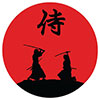
In the history of Japanese edged weapons there are objects that border between the concepts of “sword” and “knife”. This is especially true of the wakizashi, a short sword traditionally carried by samurai along with the katana, and the tanto, a combat knife popular among a wide range of social classes. Both items were worn behind the belt, had a short blade, and were used in close combat. However, there is a fundamental difference between the two, and it goes far beyond simple blade length.
Size Matters
At first glance, a wakizashi and a tanto may seem similar - especially if you focus on blade length alone. A tanto is typically between 25 and 40 centimeters in length, while a wakizashi is between 30 and 60 centimeters. Thus, a dimensional overlap is possible in the 30-40 cm range.
However, in Japanese classification, a wakizashi is always a sword, whereas a tanto is always a knife, regardless of length. The reason is different: design, status and purpose.
Wakizashi: a mini-katana, not a big knife
The main difference between a wakizashi is its origin and structure. It is an exact smaller copy of the katana, with an identical blade shape, proportions and style of construction. Its garda (tsuba), hilt, scabbard, and finishing elements are all made in the spirit of the katana, only on a smaller scale. Often wakizashi was made by the same master and in the same set with katana, making a classic pair of daisho (literally: “big and small” sword).
Knives are characterized by a variety of shapes and styles. Tanto, aikuchi, hamidashi, kogatana - each variety has its own peculiarities: the presence or absence of tsuba, the type of handle, the shape of the transition between blade and handle. Blades could be straight, curved, long or short - the main difference was not in geometry, but in the method of installation and social status of the object.
Functional Difference
Wakizashi was a weapon, a full-fledged sword suitable for combat. It was particularly effective in a confined space - for example, inside a house. Some schools of kenjutsu developed special techniques for it, including elements of iaijutsu - instant sword retrieval and striking from the sheath. In the absence of a special knife, wakizashi was even used for seppuku, a suicide ritual.
Knives, including tanto, performed auxiliary tasks. Yes, a combat tanto could be effective in hand-to-hand combat, but more often it was used as a tool: for killing the enemy, taking trophies, or in everyday life - for example, in camping conditions. Miniature knives like the kogatan were utilitarian in nature - “pocket” assistants used for cutting food, wood, ropes and other things.
Social Status and the Right to Wear
Another key difference is social status. Only samurai were officially allowed to carry a wakizashi. Moreover, while a katana had to be surrendered when entering a stranger's house, a vakizashi was allowed to be carried even when visiting the shogun's palace. It was considered the last line of defense and a symbol of personal honor. That's why it received the unofficial nickname “guardian of honor”.
The tanto, on the other hand, was a much more democratic item. It was worn not only by samurai, but also by artisans, merchants, and doctors. Even commoners could carry a knife - especially in times when laws did not explicitly forbid it. However, the carrying of longer weapons like the katana or tachi was strictly controlled. After the reforms of Toyotomi Hideyoshi and Tokugawa, the rule of two swords (daisho) for samurai only was legislated.
Conclusion
Thus, the wakizashi is not a “big knife” but a small sword with all the attributes of status, style and purpose. It was created as part of the samurai code, a weapon of combat and a symbol of social caste. Its structure repeats the katana, and its functions go beyond utilitarian use.
The Japanese knife, whether tanto, hamidashi or aikuchi, is first and foremost a tool that is flexible in style and purpose. It could be a weapon, but more often it performed household, auxiliary or ritual tasks. Its outward resemblance to a wakizashi is nothing more than an illusion created by the intersection of dimensions.
See also
-
Sojutsu - The Art of the Spear
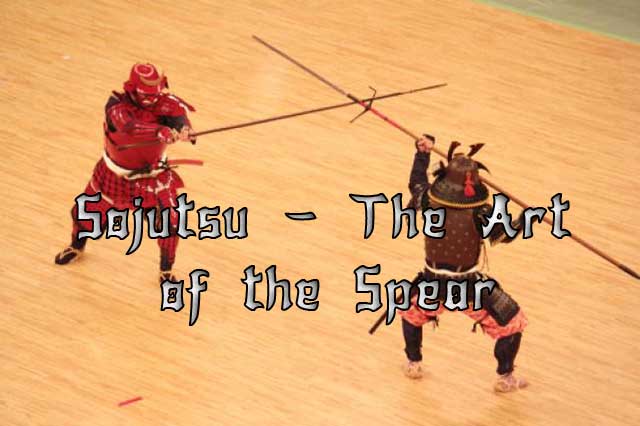
Sojutsu is a traditional Japanese martial art dedicated to the mastery of the yari spear. It is considered the second most important martial art of medieval Japan after swordsmanship.
-
Yari
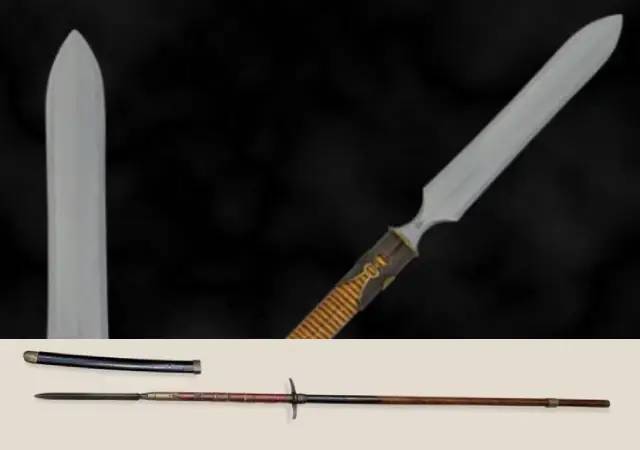
Yari is one of the traditional Japanese cold weapons (nihonto), which is a spear with a straight tip. The art of wielding a yari is known as sojutsu, a spear fighting technique.
-
Katana and Tachi
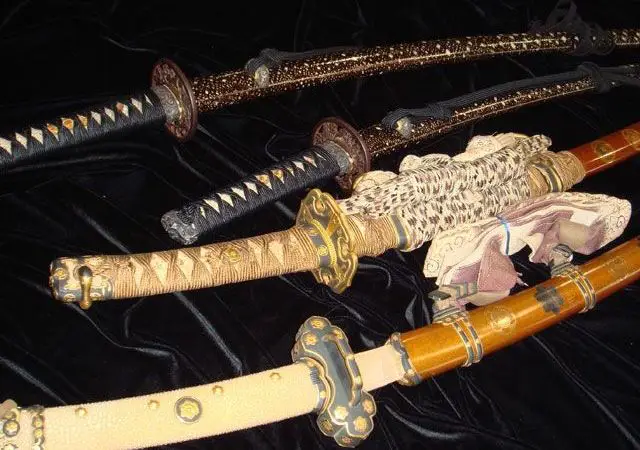
When Westerners think of Japanese swords, they often picture the iconic curved blades like the katana. However, in terms of historical precedence and prestige, it would be more accurate to reverse this image—the tachi predates the katana and traditionally held a higher status.
-
Daisho: The Origins and Evolution of the Samurai Sword Pair
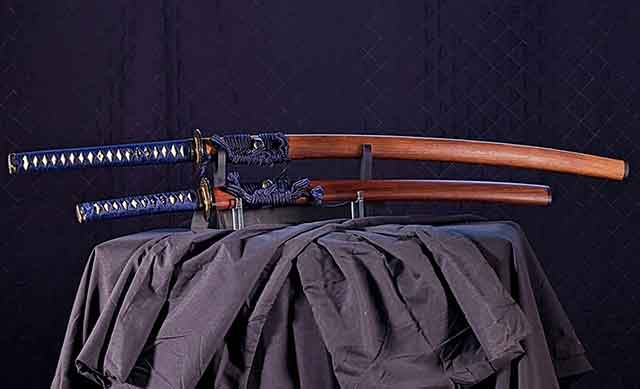
The term "daisho" finds its roots in the combination of two Japanese words: "daito," denoting a long sword, and "shoto," signifying a short sword. The combination of the words daito and shoto made the word. Daisho referred to the practice of wearing both a long and short katana together, regardless of their matching characteristics. While the classic depiction of daisho involves a katana and wakizashi (or tanto) in matching koshirae, any pairing of a longer sword with a tanto can also be considered a daisho. It later came to mean two swords with coordinated fittings. While having blades from the same swordsmith was an option, it was not a requirement for a pair to be classified as a daisho, as this would have been a more costly choice for a samurai.
-
Tanto
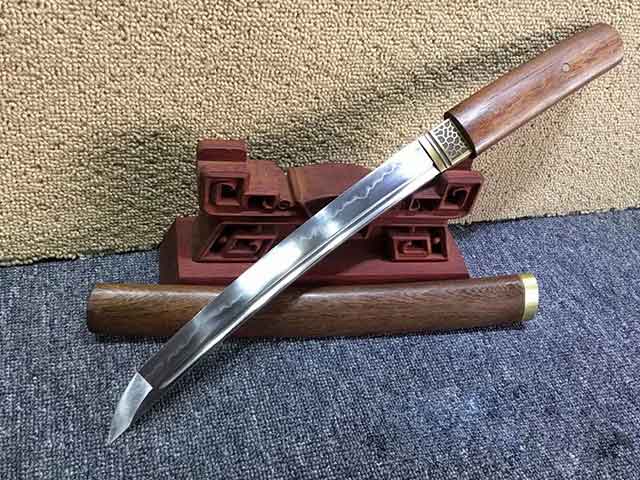
The Tanto knife is a traditional Japanese dagger that was once an integral part of the samurai warrior’s arsenal. It is known for its unique shape and cutting ability, and it is still revered by many martial artists and knife enthusiasts today.
-
Tachi
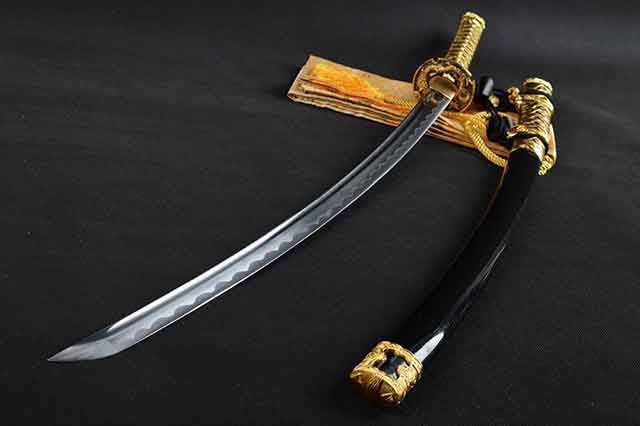
The samurai sword known as Tachi is one of the most iconic weapons in Japanese history. Its unique design and construction made it a popular choice among samurai warriors, and it played a significant role in many battles throughout Japan's history.
-
Nagitana
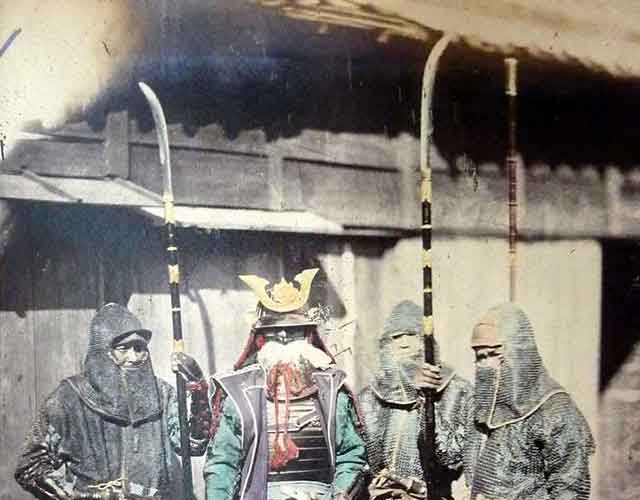
The Nagitana is a formidable weapon that was used by the samurai during feudal Japan. It was a polearm that combined the elements of a spear and a sword, making it a versatile weapon that was effective both at long range and in close combat. In this article, we will explore the history, construction, characteristics, and usage of the Nagitana.
-
Wakizashi
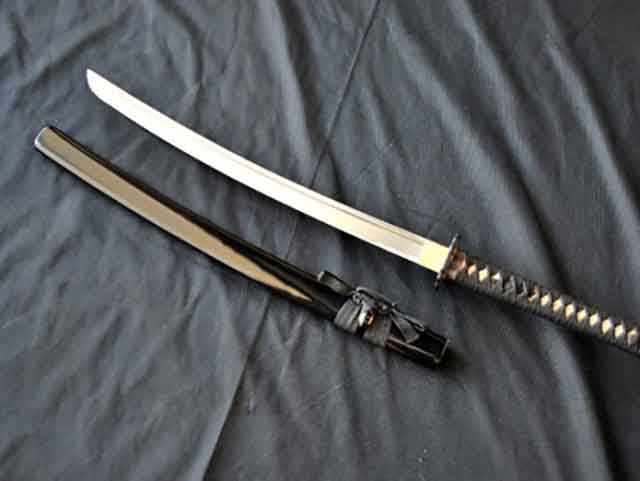
How did Wakizashi come about
The wakizashi, also known as the companion sword, is a traditional Japanese short sword that was widely used by the samurai warriors during the feudal era in Japan. This versatile sword has a long and rich history, and has played an important role in Japanese culture and warfare for centuries.

